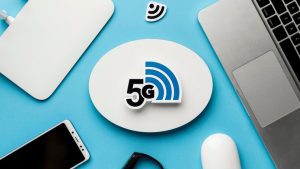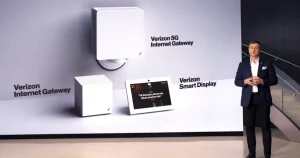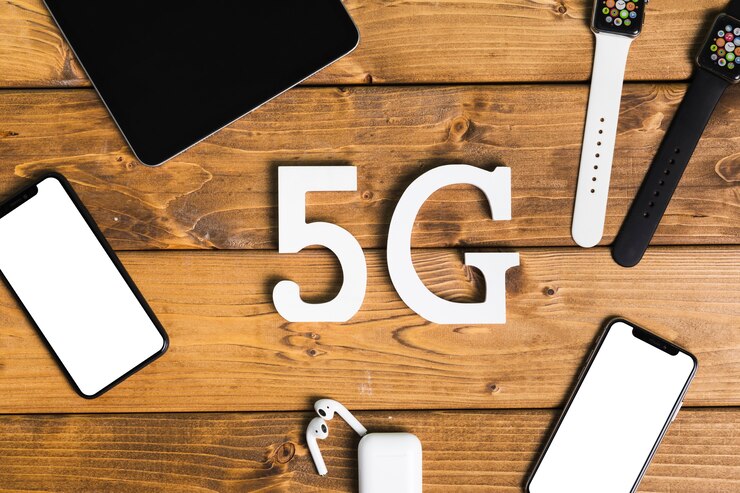In recent years, internet service has become an essential part of our daily lives. With the growing demand for faster, more reliable connections, many people are looking beyond traditional options. 5G home internet is emerging as a viable alternative to broadband, promising improved speeds and greater flexibility. This article delves into what 5G home internet is, its advantages and disadvantages, and whether it might be the right choice for you.
What Does 5G Mean?
5G, or fifth generation, is the latest global wireless standard. It represents a significant leap from previous generations, such as 4G LTE. By utilizing unused radio frequencies at the high end of the spectrum, 5G offers faster speeds, lower latency, and the ability to connect more devices simultaneously. This advancement can be particularly beneficial for households with multiple users and devices, providing the bandwidth needed for streaming, gaming, and remote work.
Key Technical Features of 5G:
- Higher Bandwidth: 5G technology uses higher frequency bands, allowing more data to be transmitted at once. This enables faster internet speeds and supports a larger number of connected devices.
- Lower Latency: Latency refers to the delay before a transfer of data begins following an instruction. 5G significantly reduces this latency, making it ideal for applications requiring real-time responses, such as online gaming and virtual reality.
- Massive Device Connectivity: 5G networks can handle up to a million devices per square kilometer, making it suitable for dense urban areas and smart cities.
How Does 5G Home Internet Work?

5G home internet works differently than traditional broadband. Instead of running a cable into your home, it connects wirelessly to the 5G cellular network. A fixed receiver—installed inside or outside your home—captures the signal, which is then converted into Wi-Fi by a modem and router. Just like with mobile phones, you’ll need a SIM card and a service contract.
The Technology Behind 5G Home Internet:
- Fixed Wireless Access (FWA): This technology allows the use of fixed antennas to receive the 5G signal. It transmits internet data via radio waves, bypassing the need for cables.
- Home Setup: Users typically require a 5G modem/router combo, which connects to the 5G network and provides Wi-Fi throughout the home. Setup is generally user-friendly and can be done without professional installation.
- SIM Card Requirement: Much like mobile phones, a SIM card is required for the device to connect to the 5G network, linking the home internet service to the mobile carrier’s infrastructure.
Comparison with Broadband
When comparing 5G home internet vs. broadband, it’s essential to consider the type of broadband in question. Fiber optic broadband offers superior speed and reliability, while copper cable connections can limit performance. If you live in an area with good 5G coverage but poor wired options, switching to 5G home internet could be a game-changer.
Advantages of Fiber vs. 5G:
- Fiber Optic: Often provides symmetrical upload and download speeds, making it ideal for tasks requiring heavy data use, like video conferencing or uploading large files.
- 5G: While not always symmetrical, it can still deliver high speeds suitable for streaming and online gaming, often at a lower installation cost and with greater flexibility.
Advantages of 5G Home Internet
1. Easy Installation
One of the most significant benefits of 5G home internet is its easy installation process. Without the need for a physical cable, many users can set up the service themselves. This convenience can save time and money that would typically go toward an engineer visit.
Example of Easy Setup:
For instance, if you choose Verizon 5G Home Internet, the package typically includes a simple setup guide. Most users can have their system up and running within minutes by following straightforward instructions and placing the antenna where it receives the best signal.
2. High Speeds
5G home internet can provide faster speeds than traditional broadband options. While the theoretical maximum speeds can exceed 10 Gbps, real-world performance often averages around 1 Gbps. This is significantly faster than many 4G LTE connections, which typically max out at 100 Mbps but often perform slower in practice.
Benefits of High Speeds:
- Smooth Streaming: Users can stream high-definition videos on multiple devices without buffering.
- Gaming Performance: Online gamers benefit from lower latency, providing a more enjoyable experience with minimal lag.
3. Cost-Effective Options
In terms of cost, 5G home internet may offer competitive pricing. Plans can start as low as $15 per month, with most falling between $30 and $80 monthly, depending on speed and service levels. Many carriers also provide discounts for existing mobile customers and other incentives, making it a potentially cheaper option than wired internet services.
Price Comparison:

- Starry Home Internet: Offers plans starting at $15 per month for basic speeds, appealing to budget-conscious consumers.
- T-Mobile 5G Home Internet: Provides an unlimited plan at $50 per month with no hidden fees or contracts.
4. Flexibility
5G home internet is also incredibly flexible. With no cables required, you can place your receiver in a location that maximizes signal strength, making it suitable for both urban and suburban environments. This flexibility can be advantageous for renters or those who move frequently.
Examples of Flexibility:
- Urban Apartments: Renters in cities can easily install a 5G receiver without needing landlord permission to run cables.
- Temporary Housing: For those who move often, like students or traveling professionals, a 5G setup allows them to take their internet service with them.
5. Unlimited Data Options
Most 5G home internet providers offer unlimited data plans, which is a significant advantage over many traditional broadband services that impose data caps. Unlimited data allows for uninterrupted streaming, gaming, and browsing without the fear of overage charges.
Benefits of Unlimited Data:
- No Additional Costs: Consumers can enjoy all their online activities without worrying about hidden fees for exceeding data limits.
- Family-Friendly: Families with multiple users can stream, game, and work from home without restrictions.
Disadvantages of 5G Home Internet
1. Coverage Limitations
While 5G home internet has many advantages, its coverage can be a significant drawback. Currently, it’s primarily available in urban areas. If you live in a rural or remote location, you may find that 5G coverage is limited or nonexistent.
Coverage Insights:
- Urban Focus: Major cities tend to have robust 5G coverage, but suburbs and rural areas may lag behind.
- Future Expansion: As carriers expand their networks, more areas are likely to gain access, but it may take time for full coverage to be realized.
2. Signal Interference
For optimal performance, a clear line of sight to a 5G cell site or tower is necessary. In some cases, you may need to install an antenna outside your home to improve the signal. Additionally, 5G signals struggle to penetrate through walls and can be affected by interference from trees, buildings, and other obstacles.
Tips for Improving Signal Strength:
- Antenna Installation: If your 5G home internet requires a receiver, placing it near a window or on the roof can help improve the signal quality.
- Minimize Interference: Keep the receiver away from large metal objects or electronic devices that may cause interference.
3. Network Congestion
As more people adopt 5G technology, network congestion could become an issue. During peak usage times, you may experience slower speeds or interruptions in service, especially in densely populated areas.
Example of Network Congestion:
In large cities, users may find that their connection slows down significantly during peak hours when many people are online simultaneously. For instance, during evening hours when families are streaming movies, a user may notice a dip in speed.
Who Offers 5G Home Internet?

Several carriers have rolled out 5G home internet services in the US, providing various options for potential customers. Here are some notable providers:
- AT&T Internet Air: Offers competitive pricing and packages that combine mobile and home internet services.
- T-Mobile 5G Home Internet: Provides a flat-rate plan with no contracts, appealing to consumers looking for simplicity.
- Verizon 5G Home Internet: Known for extensive coverage and high-speed options, making it suitable for heavy internet users.
- Starry Home Internet: A newer player focusing on affordable plans with straightforward pricing.
- US Cellular Home Internet: Offers regional coverage and competitive pricing for local consumers.
In the UK, available options include:
- EE 4G and 5G Mobile Broadband: Known for extensive mobile coverage and competitive pricing.
- Three 4G and 5G Home Broadband: Offers flexible plans aimed at younger consumers and families.
- Vodafone 5G and 4G Broadband: Provides bundled deals for existing mobile customers.
- National Broadband 5G: Focuses on providing affordable internet solutions across various demographics.
Comparing Providers
When considering a 5G home internet provider, it’s essential to compare their offerings, pricing, and coverage. Some providers may offer promotional rates for existing mobile customers, while others may include additional features, such as no equipment fees or fixed contracts.
Comparison Table of Providers
| Provider | Starting Price | Data Cap | Installation | Key Feature |
|---|---|---|---|---|
| T-Mobile 5G Home Internet | $50 | Unlimited | Self-setup | No contracts |
| Verizon 5G Home Internet | $50 | Unlimited | Self-setup | Wide coverage |
| AT&T Internet Air | $30 | Unlimited | Self-setup | Bundled mobile plan options |
| Starry Home Internet | $15 | Unlimited | Self-setup | Affordable rates |
| US Cellular Home Internet | $30 | Unlimited | Self-setup | Regional pricing |
Real-World Examples
Case Study: A Family in the Suburbs
Consider a family living in the suburbs with three school-aged children. Each child uses devices for online learning and gaming, while the parents work from home. Previously, they relied on an outdated cable service that limited their internet speed to 50 Mbps. After switching to T-Mobile 5G Home Internet, they experienced an immediate improvement in speed and reliability. The family now enjoys streaming movies, attending virtual classes, and participating in online games without interruptions.
Real Benefits Observed:
- Enhanced Learning: The children can join their online classes without lag, ensuring they don’t miss critical information during lessons.
- Family Entertainment: Movie nights are now seamless, with the family able to stream in high definition without buffering.
Case Study: An Urban Apartment
In a bustling urban apartment complex, a young professional relied on AT&T Internet Air for her work-from-home needs. Before switching to 5G, she dealt with constant buffering during video calls due to slow upload speeds. After the switch, her connection speed improved to 300 Mbps, enabling her to conduct meetings without technical issues and stream content seamlessly during her downtime.
Real Benefits Observed:
- Professional Growth: With reliable internet, she secured promotions and excelled in her remote job, enhancing her career prospects.
- Work-Life Balance: The smooth streaming of shows in the evenings contributed to a better work-life balance, allowing her to unwind after a busy day.
Key Takeaways
- 5G home internet is an exciting alternative to traditional broadband, offering high speeds and easy installation.
- While it can be cost-effective, the availability of 5G coverage is a crucial factor to consider.
- Flexibility and unlimited data options are significant advantages, particularly for households with multiple users.
- However, potential customers should also weigh the disadvantages, such as signal interference and network congestion.
Conclusion
As the demand for faster, more reliable internet connections continues to grow, 5G home internet presents a promising alternative to traditional broadband. With its easy installation process, competitive pricing, and high-speed capabilities, it has the potential to transform how we connect to the internet. However, prospective users should carefully consider coverage options, installation requirements, and potential limitations. By doing so, you can make an informed decision about whether 5G home internet is the right fit for you and your household.
With ongoing advancements in 5G technology and increased coverage, it’s likely that more consumers will experience the benefits of this revolutionary service in the coming years. Whether you’re a gamer, a remote worker, or a family looking to enhance your online experience, 5G home internet could be the solution you’ve been waiting for.












